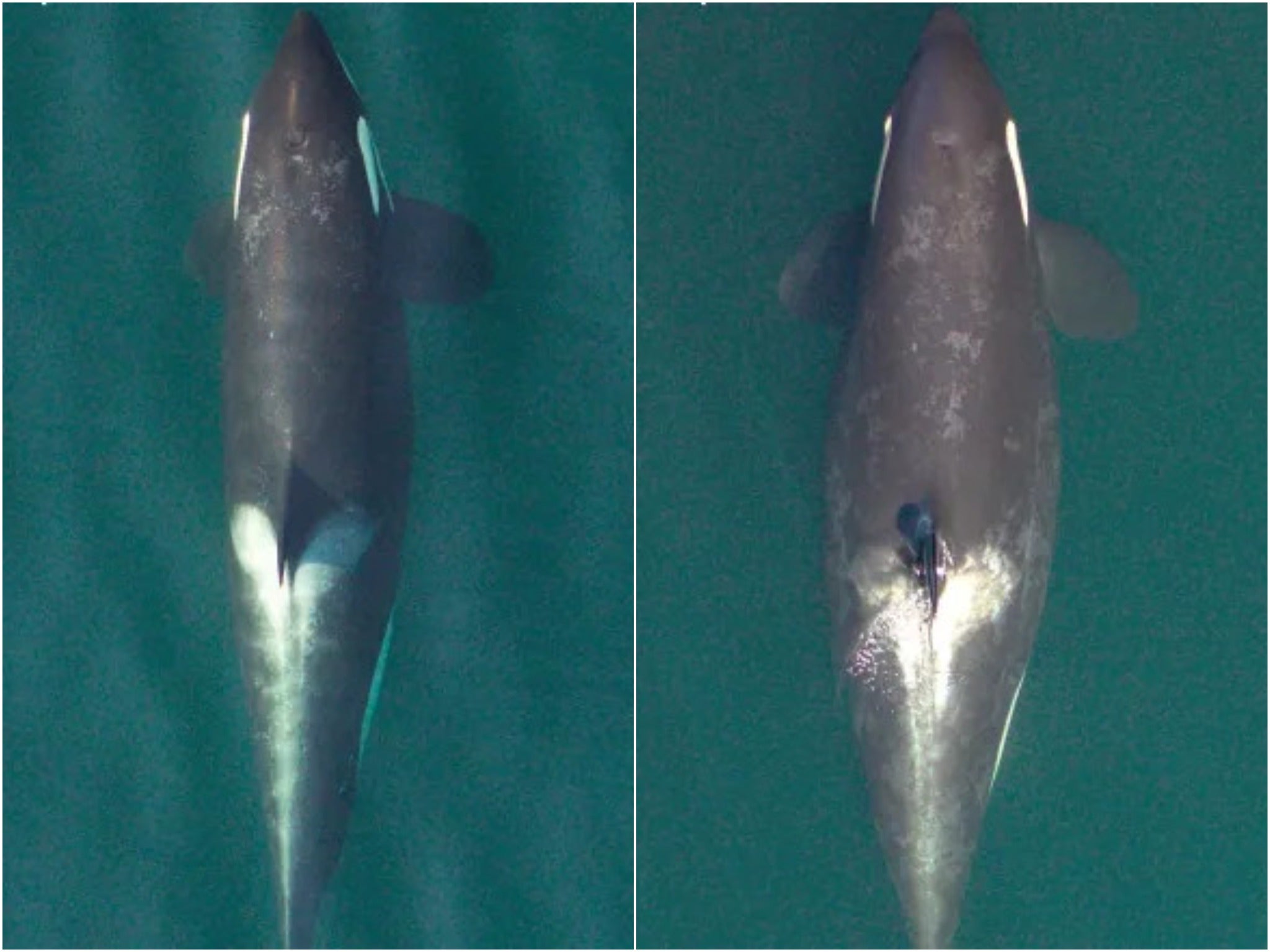Three critically endangered whales are now pregnant and could save species
‘We have documented a high rate of reproductive failure over the last decade,’ scientist says
Your support helps us to tell the story
From reproductive rights to climate change to Big Tech, The Independent is on the ground when the story is developing. Whether it's investigating the financials of Elon Musk's pro-Trump PAC or producing our latest documentary, 'The A Word', which shines a light on the American women fighting for reproductive rights, we know how important it is to parse out the facts from the messaging.
At such a critical moment in US history, we need reporters on the ground. Your donation allows us to keep sending journalists to speak to both sides of the story.
The Independent is trusted by Americans across the entire political spectrum. And unlike many other quality news outlets, we choose not to lock Americans out of our reporting and analysis with paywalls. We believe quality journalism should be available to everyone, paid for by those who can afford it.
Your support makes all the difference.Three critically endangered whales are now pregnant and could help save the species, scientists have said.
Aerial drone research by scientists in Washington state has given hope to researchers in British Columbia that the three pregnant killer whales could help the species move away from the edge of extinction.
Washington state scientists Dr Holly Fearnbach, of SeaLife Response, Rehabilitation and Research, and Dr John Durban, of Southall Environmental Associates, discovered the presumed pregnancies.
Dr Durban told the Northwest News Network the “hope” for the recovery of the species is “fragile”.
“Last year, we documented a number of other pregnant females, who were not successful in rearing calves. Unfortunately, this is not unusual and we have documented a high rate of reproductive failure over the last decade.”
The director of Ocean Wise’s Marine Mammal Research Programme, Dr Lance Barrett-Lennard, told CBC News: “It’s pretty exciting and it’s very significant. The southern resident population of which [the] J-pod belongs to is critically endangered.”
“In most years they have no reproduction at all. So having three pregnancies is good, it’s exciting. This is what the [group of whales] needs.”
The number of resident southern orcas has decreased over the last several decades from more than 90 in the 1970s to 74 today. It’s the only killer whale population that’s considered endangered.
Scientists call the group of whales the “J-Pod”, with the three expectant mothers being whales J19, J36, and J37.
Josh McInnes, a researcher at the University of British Columbia, noted that killer whales have high rates of miscarriages and infant mortality, but said that he’s still “excited” and “hopeful” that some of the pregnancies will boost the dwindling population.
“Having three calves being born that could possibly survive ... it might just help a little,” he told CBC News. “The first year is critical, killer whales have a 50-50 chance of survival especially in the first year.”
The pregnancies were discovered recently but appear to be quite far along.
“Fingers crossed that they are successful and the calves survive,” he added.
Miscarriages among the population have recently prompted fears of continued decline and eventual collapse.
J35, a female orca, went on a “tour of grief” in 2018, carrying a stillborn baby with her in the water for two weeks. The orca gave birth to a healthy whale two years later.
Dr Barrett-Lennard said researchers use drones that fly around 30 metres above the water to study the animals.
“The use of drones has revolutionized everything,” he said. “It supplies us with very high-resolution photographs ... One can see the edges of the whales pretty well and measure their total length and shape ... and of course we can detect pregnancies fairly early.”

Both the Canadian and US governments classify the southern resident orcas as "endangered". Their supply of salmon to eat is decreasing and the rise in shipping in the area has increased noise and fatal collisions.
The Canadian government issued an interim order in June to protect southern resident killer whales by increasing regulations on shipping traffic in British Columbia waters.
“The population is small and declining, and the decline is expected to continue,” the government said about the orcas. “There are forecasts of continued low abundance of Chinook Salmon. Southern residents are also threatened by increasing physical and acoustical disturbance, oil spills and contaminants.”
The noise from the shipping traffic harms the whales’ ability to use echolocation to hunt and the communication within the pod is also affected.
Dr Barrett-Lennard told CBC News that the whales were suffering “death by a thousand cuts”.
“The southern residents are iconic for us,” Mr McInnes said. “And we’re really hoping that there’s some survival for the new calves ahead.”




Join our commenting forum
Join thought-provoking conversations, follow other Independent readers and see their replies
Comments